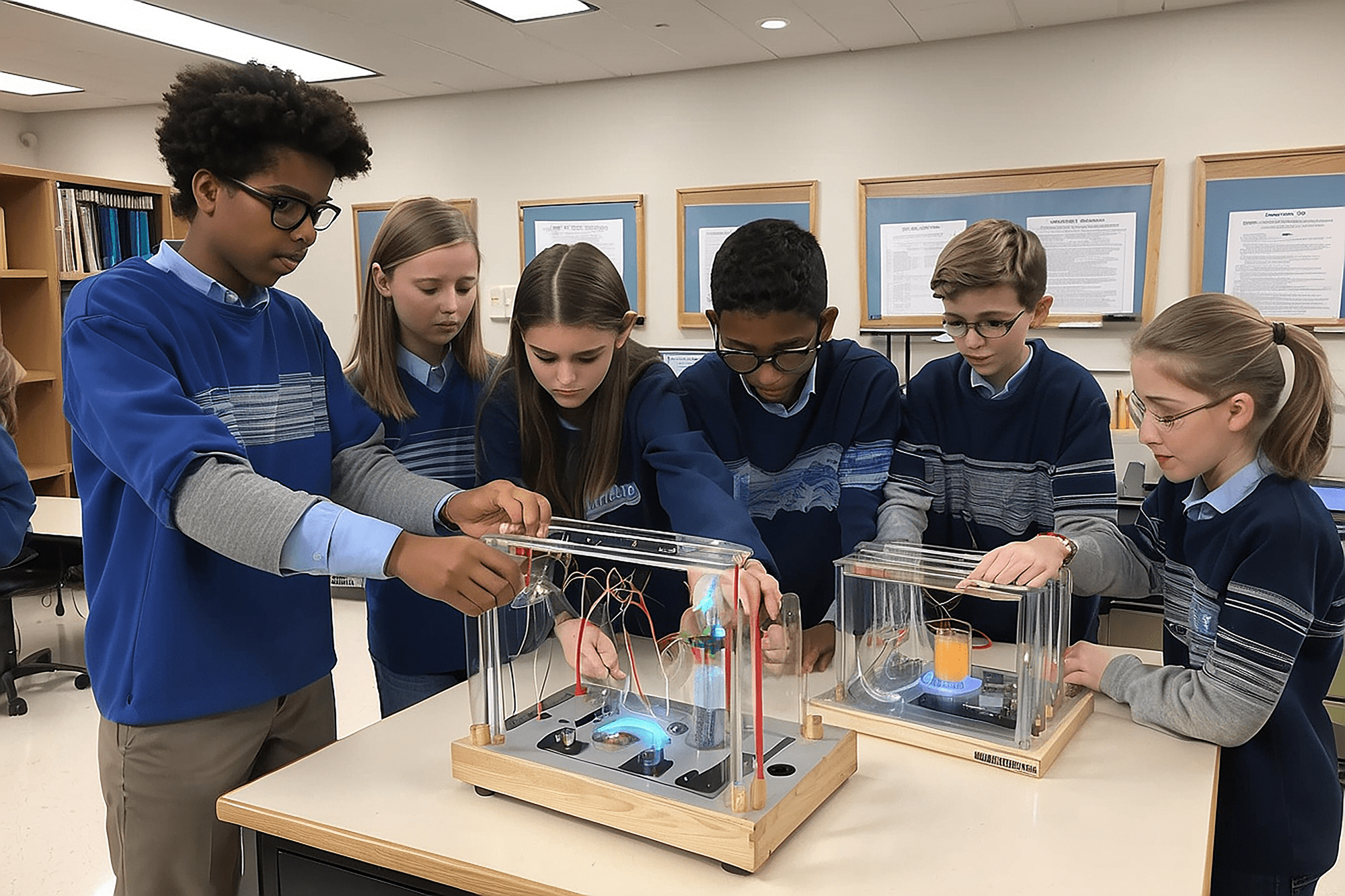The shift from primary to middle school can feel like a big leap for a child. Suddenly, they go from one classroom to many, from one teacher to multiple instructors, and from familiar routines to a more dynamic, independent academic life. It’s natural for both children and parents to feel nervous about this change.
But here’s the good news—how to help your child adjust to a new school doesn’t require grand strategies. A little awareness, communication, and the right support can make the transition a positive experience that builds resilience and confidence.
At CMR Gandhi Public School, we guide families through this transition with a focus on emotional readiness, academic adaptability, and social support—ensuring children feel seen, heard, and prepared.
What Makes the Primary-to-Middle School Transition Challenging?
Transitioning from primary to middle school often comes with several changes:
- New subjects and teachers
- More complex homework and schedules
- A broader peer group and new social dynamics
- Greater expectation of personal responsibility
These adjustments can bring excitement, but also anxiety and uncertainty. That’s why early preparation and consistent parental support are key.
1. Talk About the Change Early and Often
Don’t wait until the first day of school to bring it up. Begin conversations early. Children need time to mentally process what’s coming.
- Talk about changes they might see in their school day, new subjects, or extracurricular opportunities.
- Address their fears—whether it’s about making friends, handling lockers, or finding classrooms.
- Remind them that feeling nervous is normal and temporary.
When asking, “how can we help kids with transitions,” remember: creating a safe space for open conversation is step one.
2. Teach Practical Organizational Skills
Middle school brings more academic responsibility. Help them stay on top of their tasks by introducing:
- A planner or digital calendar for assignments and deadlines
- Color-coded notebooks or folders to organize subjects
- Sticky notes, timers, or reminder apps for building self-tracking habits
Small habits like these go a long way in smoothing the transition from elementary to middle school for students.
3. Build Self-Reliance and Decision-Making Skills
Middle school is when children begin making small decisions that shape their learning behavior. Start building independence at home:
- Encourage self-study for 15–30 minutes daily, even if there’s no homework
- Let them decide when to do their homework—before dinner or after?
- Give them small responsibilities like organizing their school bag or setting their alarm
Praise effort over outcome. Use positive reinforcement like: “I’m proud of how you managed your time today,” instead of “You finished quickly.”
4. Support Their Social Transition
With a bigger school community comes new friendships, cliques, and sometimes social confusion.
- Encourage your child to join a club or activity—it’s one of the easiest ways to meet like-minded peers.
- Discuss peer pressure and how to assert themselves respectfully.
- Practice empathetic listening—sometimes kids just want to vent.
Whether they are attending CBSE schools in Sarjapur Road or any other reputed institution, navigating social settings is a skill that improves with emotional support and honest conversation.
5. Stay Involved Without Hovering
As your child grows, it’s tempting to step in at every bump. Instead:
- Attend school events, parent-teacher meetings, or open houses
- Stay informed about schoolwork and friendships through conversations—not surveillance
- Allow your child to try, fail, and try again—with your encouragement in the background
This helps them develop a sense of ownership, which is essential for long-term academic success.
Institutions like CBSE schools in Bellandur and schools in Kasavanahalli often provide resources to help parents strike this balance—lean into that support.
6. Practice Morning and Evening Routines Together
Transition is smoother when the day starts and ends on a calm note. Work together on:
- Packing the school bag the night before
- Setting out clothes, ID cards, and water bottles
- Having breakfast together before school
These predictable routines reduce stress and promote a sense of control.
7. Don’t Forget Emotional Check-Ins
Your child may not always express their fears directly. Keep an eye out for signs like:
- Sudden irritability or withdrawal
- Frequent “stomach aches” before school
- Trouble sleeping
A five-minute daily check-in—“What was the best and worst part of your day?”—can help you stay connected without making it feel like an interrogation.
Conclusion: You’re in This Together
Every transition comes with bumps, but with the right support, it can also be an exciting leap forward. Your presence, patience, and perspective make all the difference.
At CMR Gandhi Public School, we support families through every stage—from foundational years in preschool to middle and high school readiness. Whether you’re looking at long-term learning or exploring options like the best nursery schools in Marathahalli, we believe education is most powerful when schools and parents work together.
1. How can I ease my child’s fear about starting middle school?
Talk early, visit the school, share your own school stories, and reassure them that new routines become familiar with time.
2. What are the key skills children need in middle school?
Organization, time management, self-study habits, and emotional resilience are crucial at this stage.
3. How involved should I be in my child’s school life now?
Be present but not intrusive. Attend events, follow academic progress, but give them space to navigate challenges.
4. When should I seek help from teachers or counselors?
If your child consistently shows distress or avoids school, reach out to the school counselor or teacher for guidance.








 >
>